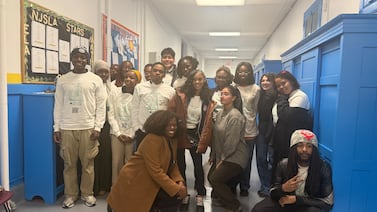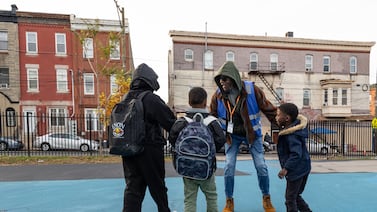Sign up for Chalkbeat’s free weekly newsletter to keep up with how education is changing across the U.S.
High school students shouldn’t shy away from talking about their race or ethnicity in college application essays, according to new guidance issued Monday by the Biden administration.
Similarly, school counselors, mentors, and employers should feel free to mention a student’s race in a college recommendation letter, the guidance states.
“The Supreme Court’s opinion recognized what we know to be true: That race can be relevant to a person’s life or lived experience and may impact one’s development, motivations, academic interests, or personal or professional aspirations,” Vanita Gupta, a top-ranking Justice Department official, told reporters on Monday. “That impact can still be considered in university admissions.”
The guidance package may offer some clarity as many high schoolers and school staff are trying to make sense of how the U.S. Supreme Court’s ruling striking down race-based affirmative action affects what they should tell colleges about themselves and whether it’s advantageous — or risky — to talk about race in their applications.
In June, Chief Justice John Roberts wrote in his majority opinion that college admissions officers could look at how race had affected an applicant’s life “through discrimination, inspiration, or otherwise.”
But some high school counselors have expressed concern that the Supreme Court’s decision could be confusing for students of color and lead some to avoid talking about their personal identities.
The new guidance suggests, consistent with the court’s decision, that colleges may consider a student’s individual experience of race or racism, even though they cannot give advantages to students solely because of their race.
The guidance is not legally binding, and what is and isn’t allowed likely will continue to be decided by courts.
Still, the guidance may shape how colleges and students respond to the ruling.
According to the guidance, admissions officers can consider how a student’s experience with racial discrimination or the racial composition of their neighborhood or school affected them and how that may influence what they’d contribute to the college.
For example, one student could write in an essay “about what it means to him to be the first Black violinist in his city’s youth orchestra.” Another student could detail how she overcame “prejudice when she transferred to a rural high school where she was the only student of South Asian descent.” A third applicant might discuss “how learning to cook traditional Hmong dishes from her grandmother sparked her passion for food and nurtured her sense of self.”
And a school counselor could write in their recommendation about “how an applicant conquered her feelings of isolation as a Latina student at an overwhelmingly white high school to join the debate team.”
“Students should feel comfortable presenting their whole selves when applying to college, without fear of stereotyping, bias, or discrimination,” two top Biden administration officials wrote in a letter.
Colleges can still tailor recruitment to reach students of color
Though the Supreme Court’s ruling is about college admissions policies, some states and colleges have interpreted the decision to apply to financial aid. Missouri’s attorney general, for example, said that colleges cannot award scholarships that consider a student’s race or ethnicity, leading the state’s flagship university to eliminate a prestigious diversity award.
That left some education equity advocates worried that officials would point to the Supreme Court ruling to limit a slew of other efforts aimed at increasing racial diversity on college campuses.
The Biden administration’s guidance is silent on scholarships — a top education department official said that was because the Supreme Court decision didn’t address scholarships — but it explicitly states that colleges don’t have to “ignore race” when they are identifying prospective students through recruitment efforts.
Colleges can target their outreach to schools and districts that predominantly serve students of color, the guidance states. They can also recruit from high schools that historically haven’t had many students apply to the college — which could be a strategy for recruiting students of color without considering race directly.
Similarly, colleges and universities can also continue to run mentorship or pipeline programs meant to help prepare students from certain schools to attend that college.
That could look like a summer enrichment camp designed for students who attend public high schools near the college. Colleges are also allowed to set aside slots for students who participate in those pipeline programs, as long as it was open to a broad group of kids — such as all juniors at a certain high school.
“Although this decision changes the landscape for admissions in higher education,” Gupta said, “it should not be used as an excuse to turn away from longstanding efforts to make those institutions more inclusive.”
Kalyn Belsha is a senior national education reporter based in Chicago. Contact her at kbelsha@chalkbeat.org.






